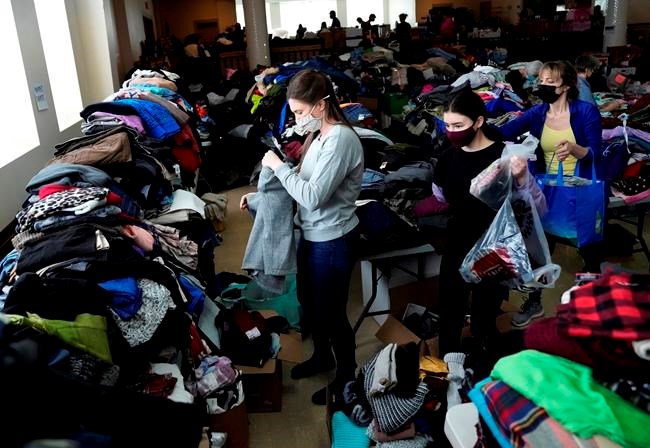MONTREAL — Instead of donating money to charity, Noémie Sauvé gives back to her community in a different way.
"As young people, we don't necessarily have the funds to give monthly donations but we're more prone to giving our time," the 23-year-old medical student said.
Sauvé has been involved with Helping Hands, a McGill University student-led initiative that provides sanitary products to women in need around Montreal, for the past four years. She is now president of the organization.
Despite having an inconsistent income and dealing with the rising cost of living, younger Canadians still want to feel as though they are making an impact, said Wen-Chih O'Connell, executive director of the PayPal Giving Fund.
O'Connell said this desire has changed the way generation Z and millennials are giving back compared with older generations.
She said that older generations "tend to give regularly through recurring donations" and younger generations are more likely to make a one-time donation to a popular cause, typically online.
Platforms such as GoFundMe, Facebook fundraisers, charity websites or live streams are all popular choices for young people making financial donations, said O'Connell.
O'Connell added that another benefit of donating is the accompanying tax receipt, however, this is not a priority for young people.
Hunter Cubitt-Cooke, a staff member at Le Frigo Vert, a community space in downtown Montreal, said rather than relying on a charity model, some younger people prefer to put forth time or talent towards a cause instead of donating money.
"People have all kinds of things to offer that isn't money," said Cubitt-Cooke.
Recent mutual aid initiatives at Le Frigo Vert involve creating care packages from donated items for local shelters in Montreal.Â
"We do a lot of our fundraising for really grassroots and marginalized people who aren't part of those larger systemic organizations," said Cubitt-Cooke.Â
Cubitt-Cooke said the community space looks to use a give-and-take method to lift one another up, such as providing free meals in exchange for time and donations.
"What we try to do is to get everybody to understand their own well-being is dependent on everybody else's well-being."Â
A significant part of the mutual support is education through events where a cause can be discussed face-to-face, said Cubitt-Cooke, noting that social media also plays a significant role in posting information about cases, promoting events and sharing lists of items local shelters require.
O'Connell echoed the sentiment that young people looking to give back to their communities may be moved to donate to certain organizations based on influencers and popular social causes online.Â
But, those donating through online platforms should do their best to ensure their funds are going to end up in the intended pockets.
"There's a lot of money that's wasted on all the paperwork and all the administration of a big organization, versus when we give directly through a smaller organization like Helping Hands, where basically no one has a salary, all the money goes directly to the community," said SauvĂ©.Â
This report by The Canadian Press was first published Nov. 29, 2022.
Caitlin Yardley, The Canadian Press




